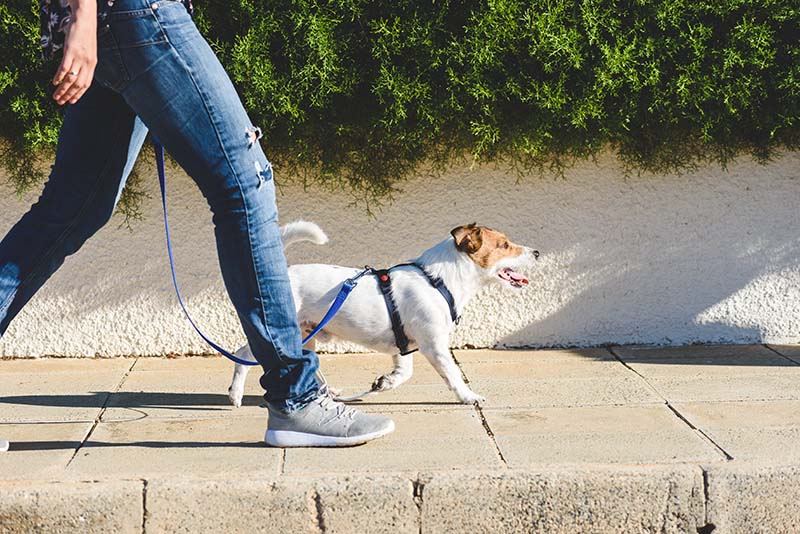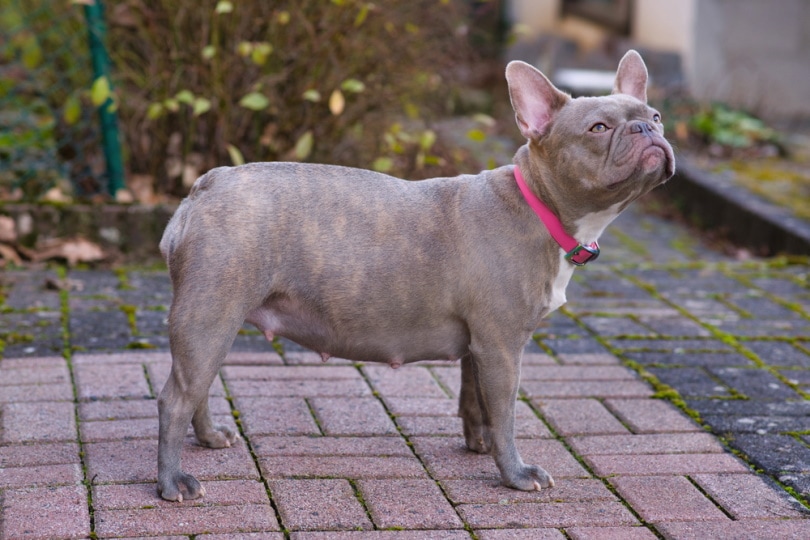How to Stop a Dog From Digging Up Your Yard: 12 Proven Methods

Updated on
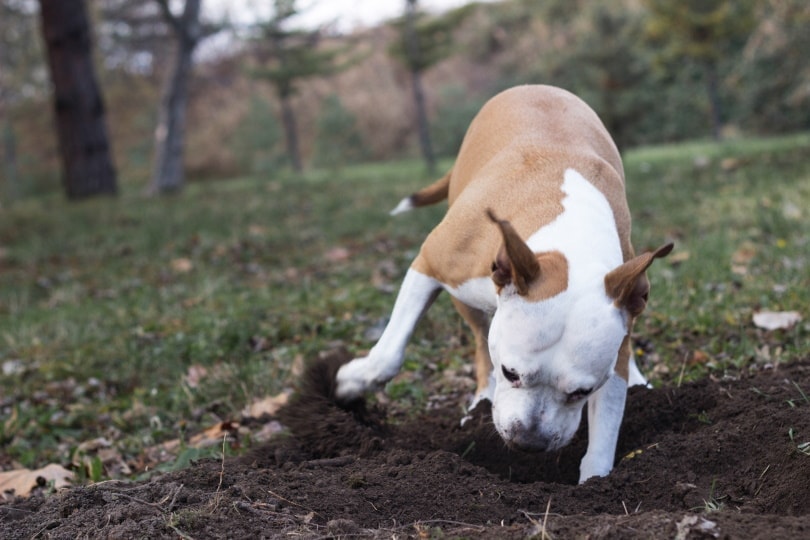
There’s nothing quite like a pristine, well-manicured yard to elevate the aesthetic appeal of your home. But what happens when your four-legged best friend decides to treat your yard like their own personal excavation site? We all know the answer to that.
And that is precisely why we’re sharing some effective strategies to preserve your garden’s beauty without dampening your dog’s spirits. As you read on, keep in mind that our goal is to redirect their behavior, not to suppress their natural instincts.
Understanding Your Dog’s Instincts
Before we get into the steps, it’s essential to comprehend why dogs dig in the first place. Digging is a natural behavior that may be linked to seeking comfort, alleviating boredom, burying treasures, hunting, or escaping. As pet parents, it’s up to us to identify the causes and address them adequately.
With that, let’s discuss the top strategies to prevent your pup from tearing up your yard. With these tips, you’ll be well on your way to curbing this unwanted behavior. Let’s dig in!
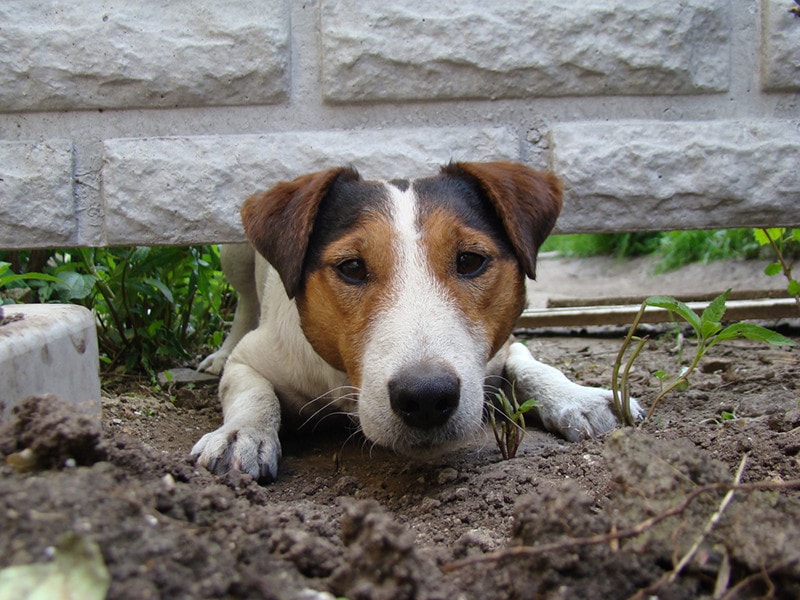
The 12 Tips on How to Stop Your Dog From Digging Up Your Yard
1. Designate a Spot for Digging
Creating a designated digging spot can channel your dog’s digging instincts while protecting your yard.
- Identify a corner or area of your yard where you can allocate for this purpose.
- Fill this area with sand or loose soil, which are materials that dogs love to dig in.
- Occasionally bury your dog’s favorite toys or treats in this pit to keep it interesting.
By creating a designated spot for digging, you satisfy your dog’s natural instincts without having to sacrifice your entire yard. It’s a win-win!
2. Block Off Access

Restricting your dog’s access to their preferred digging spots can work wonders.
- Identify the area where your dog frequently digs.
- Use temporary fencing, large rocks, or garden decorations to block the dog’s access.
- If unsupervised, consider using a dog crate or playpen.
With a little patience and consistency, this method can effectively discourage your dog from damaging your yard. Remember, the goal isn’t to confine your pet excessively but to manage their behavior in a way that safeguards your yard.
3. Block Digging Spots With Plants
Planting pointy plants can be another natural deterrent to digging.
- Identify the preferred digging areas in your yard.
- Select pointy or thorny plants—like roses or holly—that are non-toxic and not harmful to dogs.
- Plant these in the areas where your dog tends to dig.
The discomfort experienced when trying to dig around these plants can deter your dog from future digging attempts. Don’t forget to choose plants that are safe for your dog!
4. Arm With Balloons

Balloons can be used to startle your dog and discourage digging. However, this method should be used sparingly.
- Inflate a few balloons and place them strategically in your dog’s digging area.
- Wait for your dog to encounter the balloon while digging, causing it to pop and startle your dog.
- Monitor your dog’s reactions closely to ensure they are not overly stressed.
While balloons can be an effective deterrent, they should be used sparingly to avoid causing unnecessary stress to your dog.
5. Treat With Toys
Toys are more than just fun—they are crucial for mental stimulation and behavior management.
- Provide your dog with durable chew toys, interactive puzzle toys, or squeaky toys.
- Rotate the toys regularly to keep your dog interested.
- Monitor your dog’s interaction with the toys to ensure they are engaging in healthy play.
A well-stimulated dog is less likely to indulge in destructive behaviors like digging. So let the fun and games begin for more playing and less digging!
6. Engage in Training

Training can go a long way in shaping any dog’s behavior.
- Begin teaching basic commands such as “Leave it” or “Don’t dig”.
- Use positive reinforcement techniques such as treats, praises, or petting to reward your dog when they follow your command.
- If you’re having difficulty, don’t hesitate to seek the help of a professional dog trainer.
Training will not only help control your dog’s digging habit but will also strengthen your bond and improve overall behavior.
7. Create a Smell Barrier
Every dog owner is aware of their pet’s keen sense of smell, which we can use to our advantage to deter digging.
- Identify the specific areas in your yard where your dog loves to dig.
- Choose substances with strong odors that dogs find unpleasant, such as citrus peels, vinegar, or commercially available dog deterrents.
- Apply these substances regularly to the identified areas.
By consistently treating these areas with dog-deterring smells, you’ll soon notice a decrease in their digging habits. Always ensure these substances are pet-friendly to avoid causing any harm to your furry friend or the environment.
8. Build a Barrier

Creating a digging barrier can effectively deter your dog from damaging your yard.
- Get chicken wire or an L-footer suitable for the size of your yard.
- Place it under the soil in the areas your dog usually digs.
- Secure the wire’s edges properly to prevent injuries.
With this invisible barrier, your dog will find digging in these areas uncomfortable and will be deterred from doing so. Always ensure the safety of your dog when using such deterrents.
9. Cover the Ground
Covering the preferred digging spots with materials dogs find uncomfortable can discourage them from digging.
- Identify the areas where your dog frequently digs.
- Choose materials like pebbles, rough mulch, or pine cones, which dogs find unpleasant to dig in.
- Cover these areas with the chosen materials.
This method provides an easy and natural way to prevent your dog from digging up your yard. However, always ensure the materials used are safe for your pet.
10. Exercise!
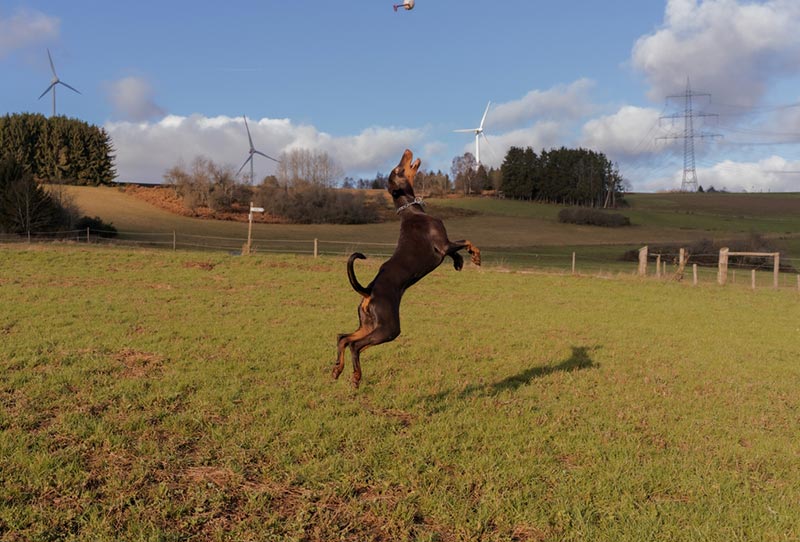
Regular exercise is vital to keeping your dog happy and preventing destructive behaviors like digging.
- Incorporate regular physical activities like fetch, tug-of-war, or daily walks into your dog’s routine.
- Engage your dog in mental exercise using puzzle toys or training sessions.
- Always monitor your dog’s energy levels to make sure they are getting adequate exercise.
When your dog is tired from a day full of fun activities, he’ll be less likely to resort to digging for entertainment.
11. Combat With Water
A mild spray of water can serve as a surprising, yet harmless, deterrent for your dog.
- Identify the areas where your dog frequently digs.
- Use a spray bottle or a motion-activated sprinkler to blast a gentle spray of water when your dog starts digging.
- Monitor your dog’s reactions to ensure they’re not scared but just mildly discouraged from digging.
The goal here is not to frighten your dog but to create an association between digging and the slight inconvenience of being sprayed with water. Always make sure your interventions are pet-friendly and don’t cause distress to your dog.
12. Combat Your Dog’s Anxiety
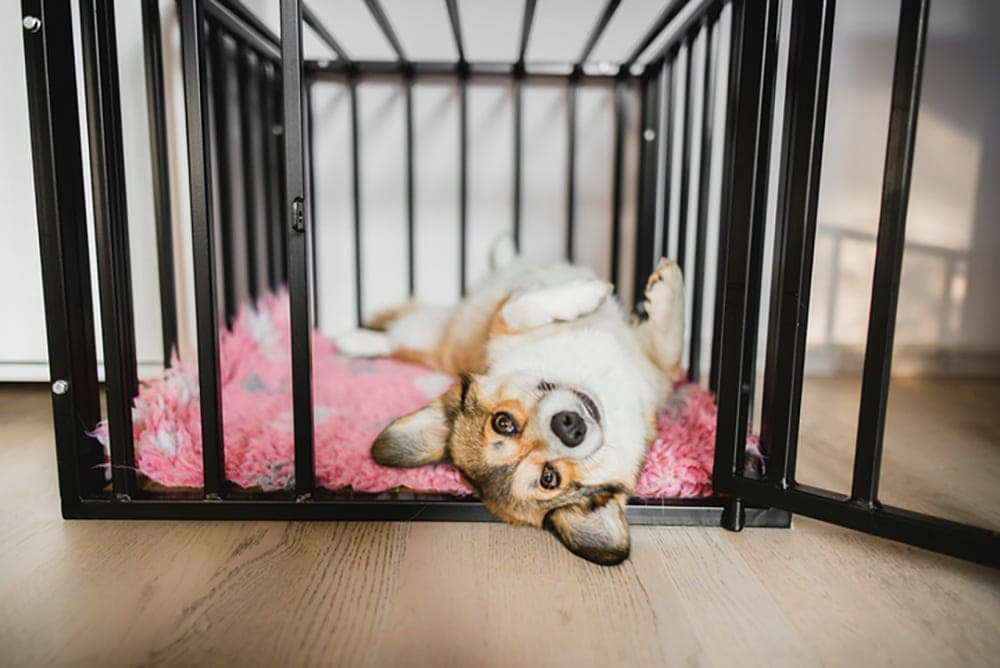
If your dog’s digging is caused by separation anxiety, addressing this issue specifically can help.
- Start crate training or gradual desensitization to help your dog get used to being alone.
- Consult with a professional for more tailored anxiety remedies if necessary.
- Monitor your dog’s behavior and make adjustments as needed.
Curing separation anxiety requires patience and consistency but can significantly improve your dog’s well-being and prevent destructive behaviors.
Conclusion
Remember, patience and consistency are key when dealing with a digging dog. By addressing their needs and redirecting their behavior, you can enjoy a beautiful yard without dampening your dog’s spirits. It’s all about understanding their world and finding a middle ground that satisfies both parties.
Featured Image Credit: sanjagrujic, Shutterstock




